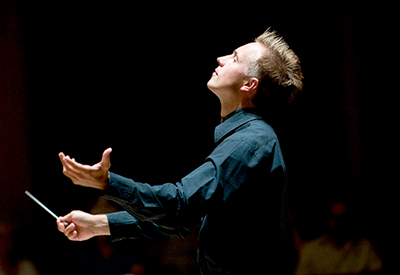by Nicholas Stevens

The program began with a tone poem the length of a pop song, Anatoly Liadov’s Baba-Yaga. Born four years after Tchaikovsky, Liadov completed few large-scale works. Baba-Yaga, named after an evil spirit from Russian folklore, bubbles along with irrepressible energy, sounding a bit like a Russian take on The Sorcerer’s Apprentice, and offering many delights. The flute section excelled at its clever ending.
Simon Trpčeski set a solid precedent for the rest of his performance in Rachmaninoff’s Rhapsody on a Theme of Paganini with his very first chord, a bass-heavy roar. As fun to watch as he was to hear, Trpčeski sat nearer the right end of the keyboard than the left, having to twist and lean to reach many of the piece’s tolling bass notes. The soloist maintained a dreamy sense of time and phrasing in slower sections, and conspired with Petrenko to made an inexorably expanding wedge out of the famous 18th variation. As he played the piece’s impish final notes, Trpčeski abruptly stood — a fun and welcome bit of theatre. After an enthusiastic ovation, he gave the crowd Mendelssohn’s Song Without Words, Op. 30, No. 6. Rendered in simple, elegant, and transparent fashion, it felt like the perfect palate-cleanser between the heavier fare on either side.
The serene opening of Prokofiev’s Symphony No. 5 unfolded against a sonic backdrop of insects’ chirps, but given Petrenko’s penchant for sudden turns toward high-volume peaks, the mood of tranquility was bound to break before long. Prokofiev’s fifth has many moments of darkness, but Petrenko and the Clevelanders colored the first movement with especially somber hues. Prominent rumblings in the low register, courtesy of pianist Joela Jones and contrabassoonist Jonathan Sherwin, registered as warnings. Petrenko approached the end of the movement as though pushing a massive, heavy door closed.

Published on ClevelandClassical.com August 20, 2018.
Click here for a printable copy of this article



